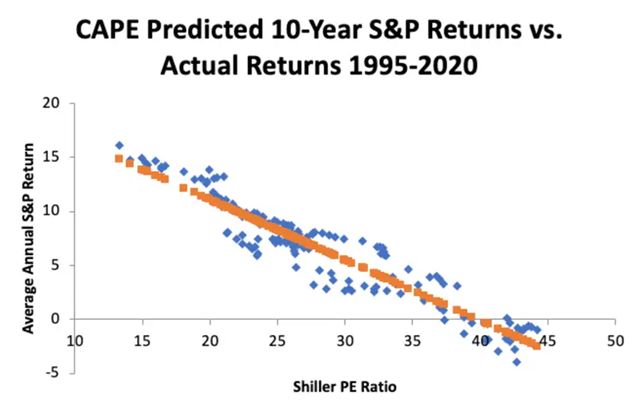Morningstar* last week advised that tactical asset allocation funds “failed—again.”
That sounds ominous for this class of strategies, but a closer review suggests it’s misguided to pull the plug on the idea that dynamically adjusting weights of asset classes has crashed and burned. As discussed below, the case for tactical asset allocation (TAA) is quite strong, assuming you’re an informed investor able and willing to separate the wheat from the chaff in this corner of portfolio management.
Here are some of the key points that, collectively, strongly suggest that TAA is worthwhile and arguably essential for designing and managing asset allocation strategies.
Definitions
Let’s start with the basics. A productive discussion of TAA requires that we define our terms. TAA means different things to different people and so there’s a wide array of definitions, ranging from aggressive, shoot-for-the-moon strategies that rely on intuition and qualitative forecasts to relatively systematic, rules-based portfolios that tilt asset weights moderately.
The closer you lean toward the latter, the stronger the case for TAA as a risk-management system for running portfolios. A key pitfall when debating TAA’s merits is assuming that analyzing the former offers reliable guidance in evaluating the latter.
At a very high level, TAA can be defined as actively adjusting asset weights. But that doesn’t tell us much since almost every investor engages in some form of active asset allocation and does so in countless ways. Unless you’re initially setting weights, and forever letting the market adjust the mix – a true passive asset allocation strategy – some form of TAA prevails. But the details get complicated, which is why a simple top-down review of TAA tends to be unreliable at best, and deeply misinformed at worst.
Results vary—a lot
Depending on the type of TAA strategy under review, the performance and risk profile can look encouraging or ugly, or something in between. Relatively middling results aren’t uncommon. As a result, it’s crucial to understand what you’re analyzing in a corner of the investment world that offers strategy choices that run the gamut. In turn, average results from a pool of TAA strategies can be misleading.
The TAA beta, if you will, can be unreliable in the extreme compared with reviewing, say, large-cap value or small-cap growth strategies. Trying to force fit a universe of TAA strategies that operate across a broad range of methodologies into a type of Morningstar-style bucket can be deceptive. Morningstar reports that its “database includes a total of 243 unique funds in this category (not including multiple share classes), but 126 of those no longer exist.”
I haven’t reviewed each of those funds so I don’t know the type of risks they’re targeting or the methodologies they’re deploying. But what I do know is that taking a broad set of funds that are labeled TAA is a very different analytical exercise vs. carefully curating a set of funds in this space for assessing success and failure. If you prefer the former and avoid the latter, caveat emptor.
The choice of benchmark is crucial
As in most cases of investment review, portfolio analytics that incorporate relevant benchmarks are important, perhaps more so in TAA than elsewhere. In the Morningstar article, the analysis relies on comparing the wide-ranging TAA fund inverse to a simple US 60/40 benchmark of stocks and bonds. Again, I haven’t looked at each of the funds that Morningstar reviewed, but potentially there’s a serious caveat here. Unless all the funds are tightly focused on a US 60/40 opportunity set, this benchmark will be misleading to some degree, perhaps radically.
There’s another dimension to consider too. If you’re comparing a rules-based, risk-managed TAA strategy to a passive 60/40 mix that’s rebalanced once a year, for example, it’s essential to review risk and return rather than just performance in isolation. A simple example: a TAA fund that captures 90% of the performance of a 60/40 portfolio may appear to be a “failure” based on a trailing return. But if the same TAA portfolio generates 90% of the return with 70% of the risk, that’s a win, assuming that’s your goal. All of this reminds us that it’s often necessary to design a relevant (i.e. customized) benchmark for analyzing the unique risk and return profile for a TAA strategy. Simple, off-the-shelf benchmarks usually fall short on this front.
Some, but not all, TAA strategies post encouraging results
Because TAA varies far and wide, it’s inevitable that there will be a wide range of winners and losers. But a long history of TAA research, along with a rich data set of historical results, suggests that there’s genuine, enduring opportunity in this space.
I could cite a laundry list of examples, but in the interest of brevity, I’ll stick to one. Using valuation to adjust equity weight to capture changes in expected return is one of a number of productive strategies to consider. Professor Robert Shiller’s stock valuation metric – the cyclically-adjusted price-to-earnings ratio (CAPE) – has been shown to be a relatively reliable predictor of 10-year return, notes Michael Finke, a professor of wealth management at The American College of Financial Services.

There are several variations of CAPE and valuation-based strategies that show encouraging results for dynamically managing asset allocation.
CAPE-based analysis only scratches the surface. There are many other empirical studies that basically identify useful strategies for estimating how ex-ante return and risk vary in real-time, across many different predictors and asset classes. These studies imply that adjusting asset weights – a form of TAA – is productive.
The bottom line:
TAA strategies should be evaluated on a case-by-case basis, ideally against a relevant benchmark that’s designed to capture the specifics of the opportunity set and unique risk and return objectives. This is a very different world from, say, analyzing how active managers in the large-cap space compare against the S&P 500 Index.
Reviewing hundreds of active long-only large-cap managers (sans leverage) against the S&P is useful. Indexing in this space tends to capture the average (or modestly above-average result), as numerous studies have shown. But, that methodology doesn’t readily apply in TAA, which has wide flexibility and minimal consensus on what constitutes beta.
The good news is that a careful study of TAA highlights a far more encouraging historical result than Morningstar’s broad-brush, top-down review last week suggests. The average fund in Morningstar’s universe may be middling, but that’s far from the last word on deciding whether TAA is useful.
*You can find the Morningstar article on TAA here.
***
Disclosure: James Picerno is an employee at The Milwaukee Company, the adviser to The Brinsmere Funds – a pair of risk-managed asset allocation funds A form of TAA is a component of how we manage money. Note, too, that he wrote a book in this space: Dynamic Asset Allocation: Modern Portfolio Theory Updated for the Smart Investor.
